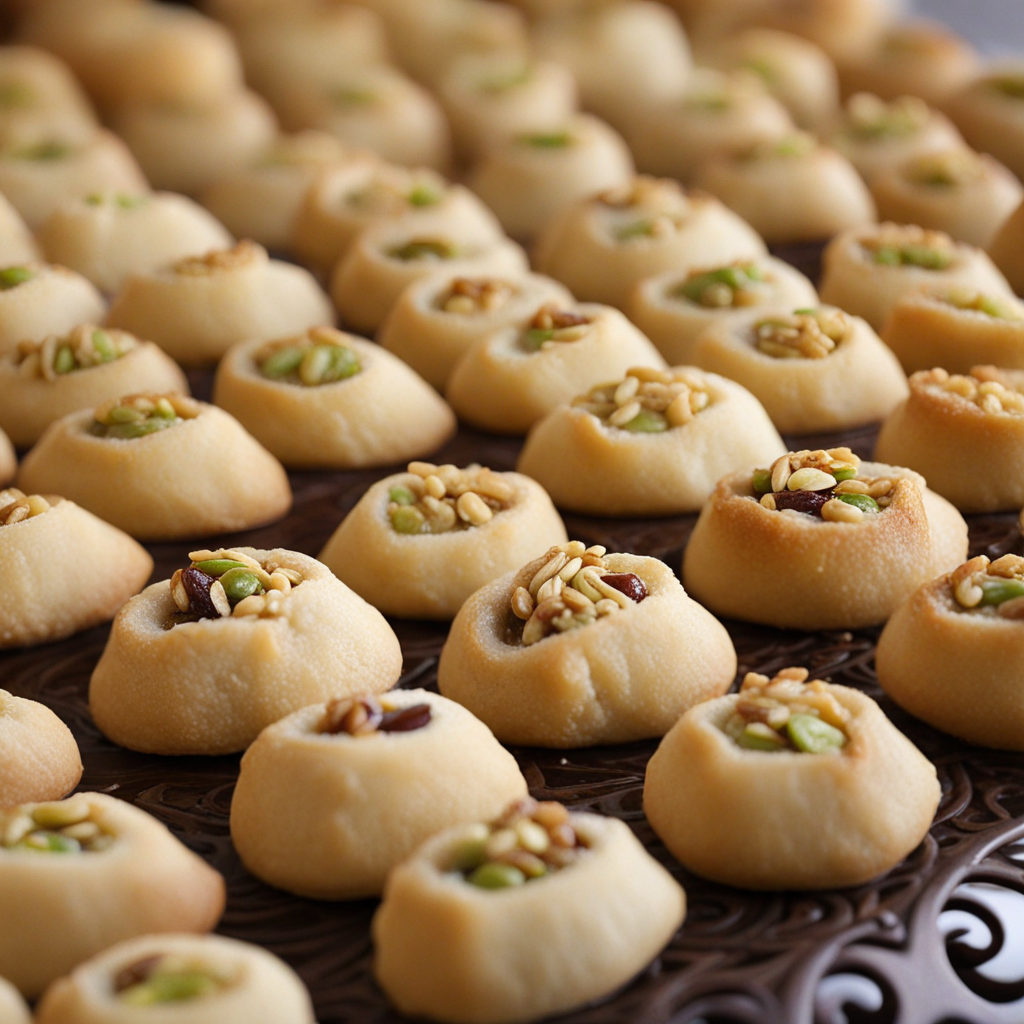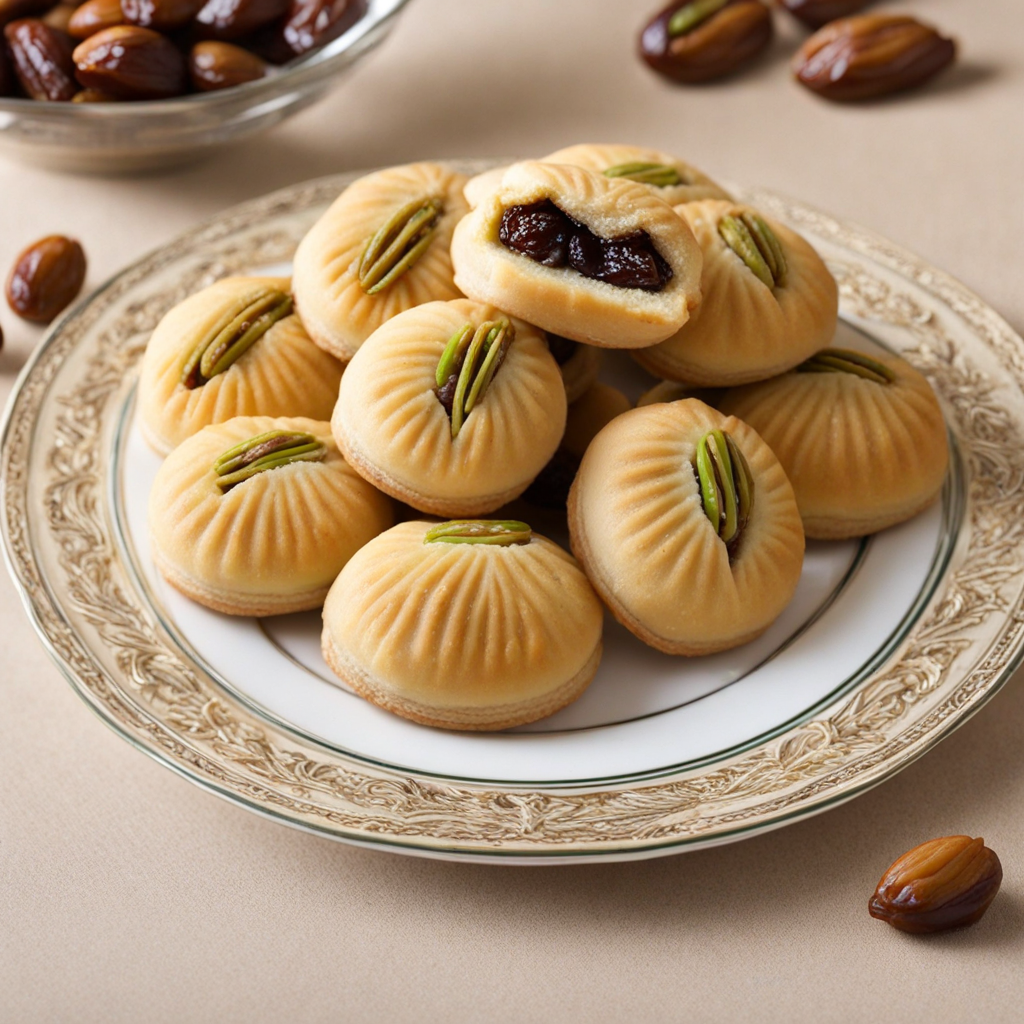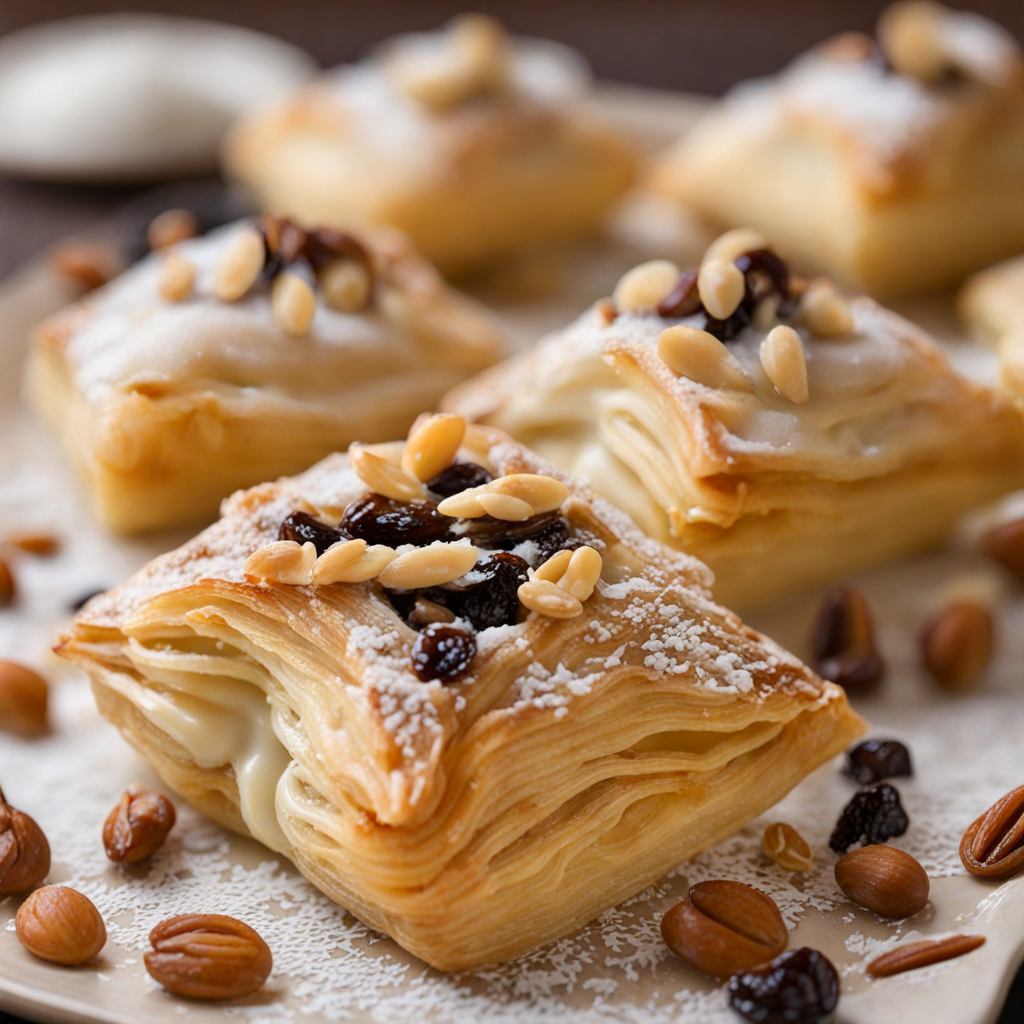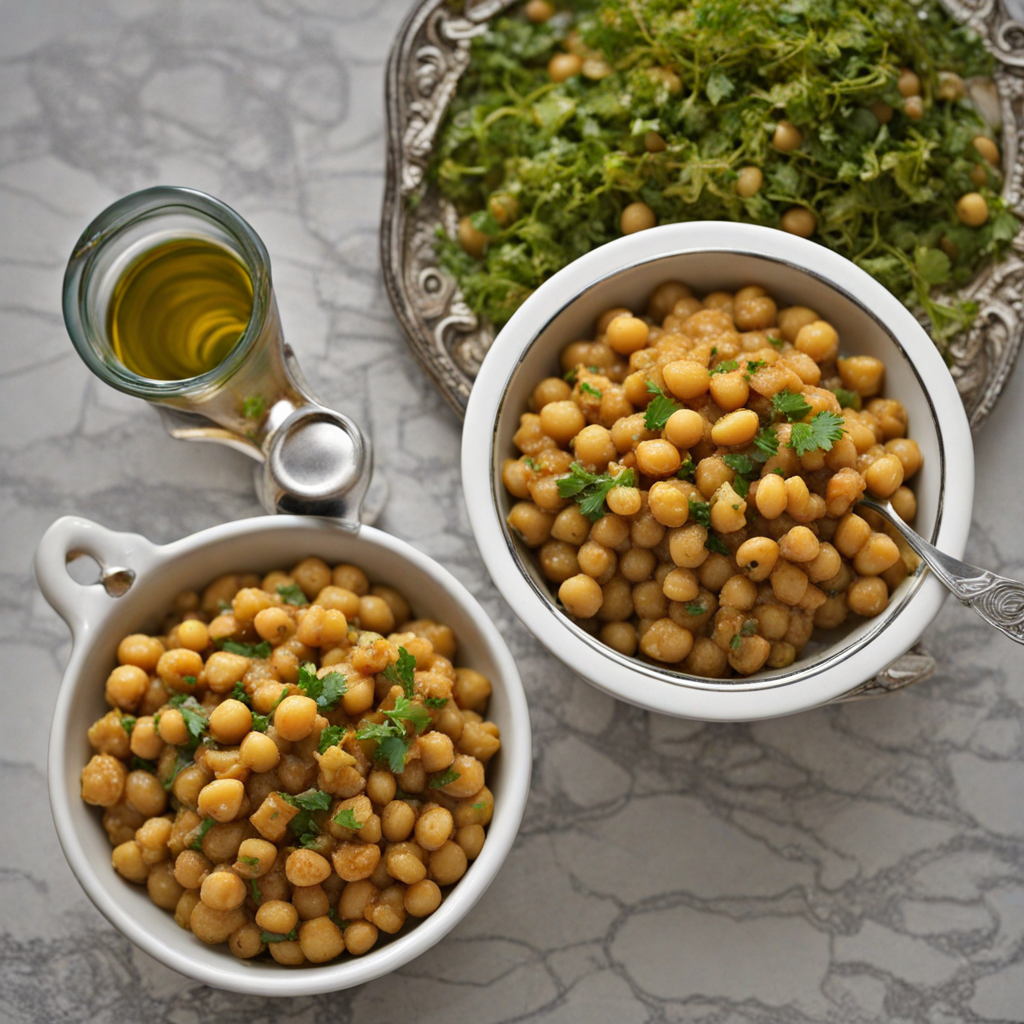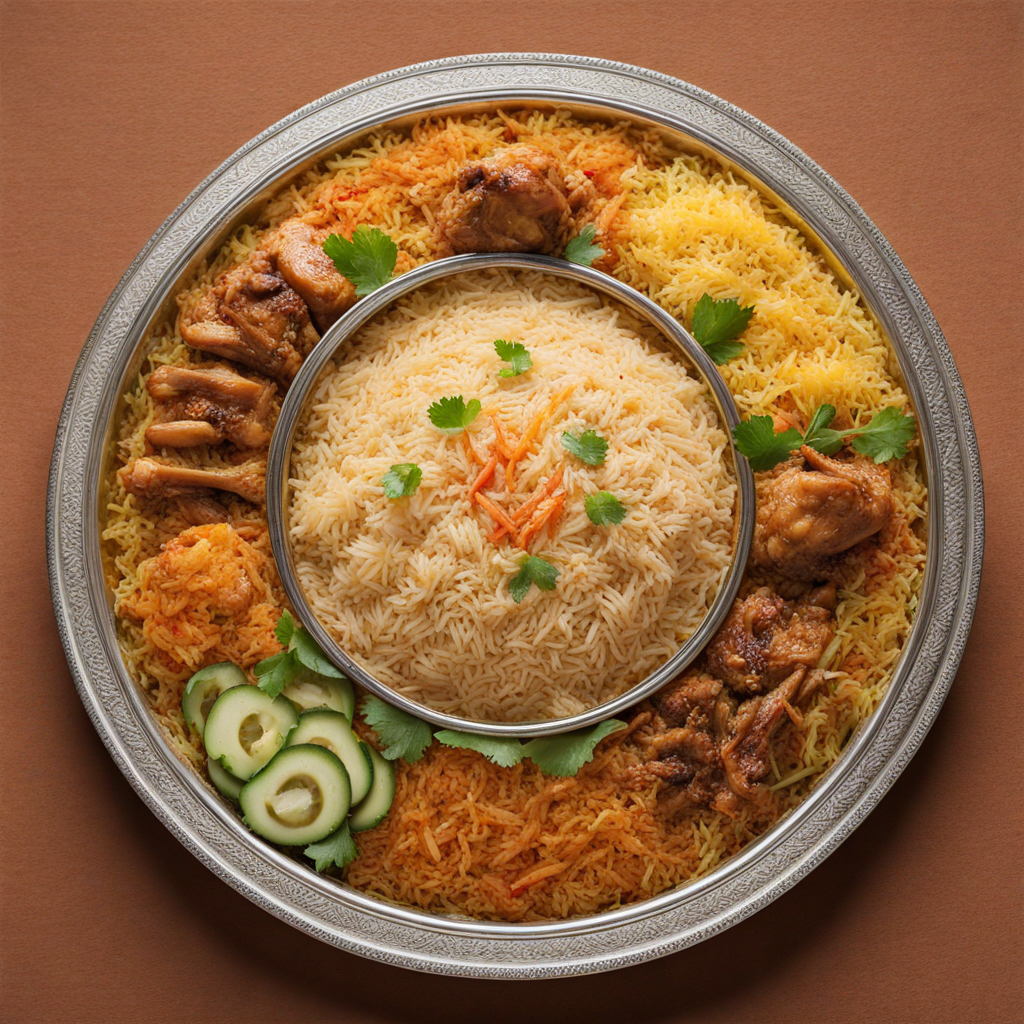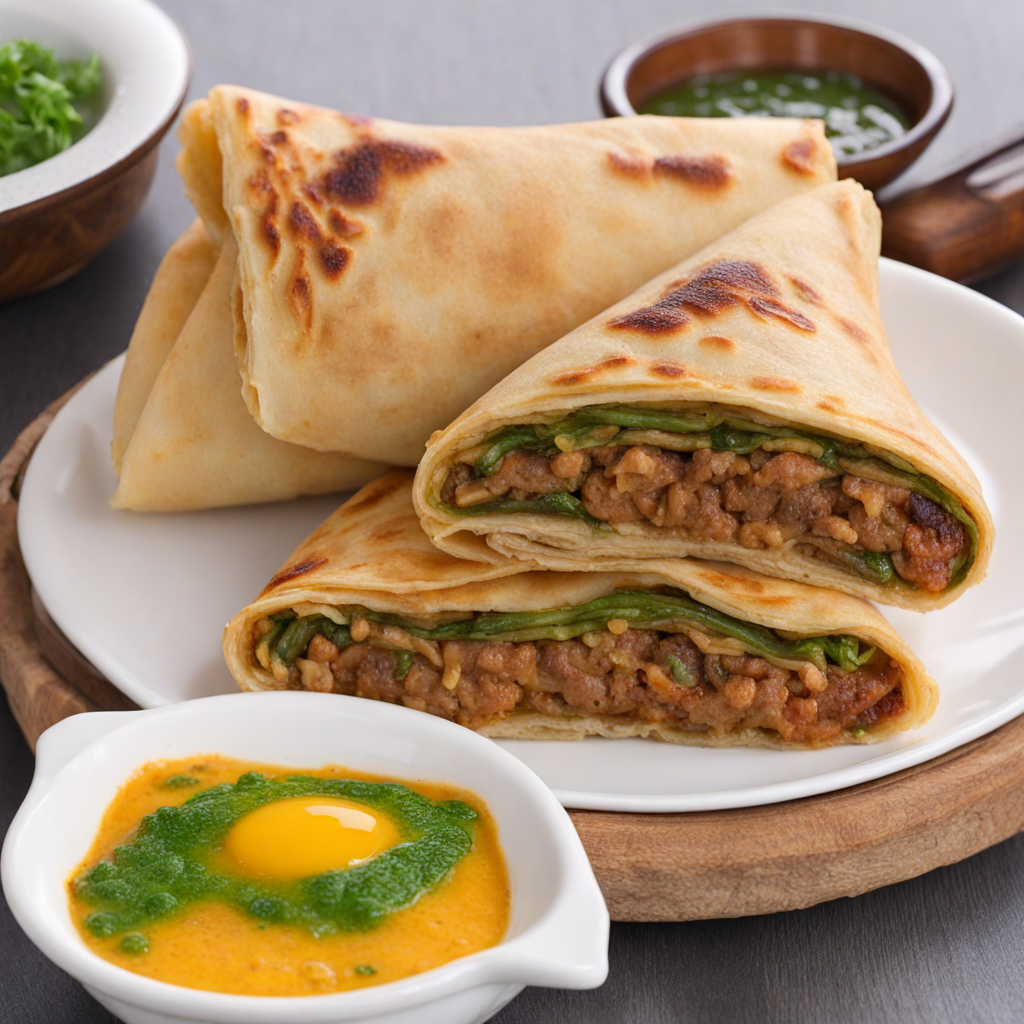Maamoul
Maamoul is a delightful Middle Eastern pastry that hails from Saudi Arabia, celebrated for its rich flavors and intricate textures. Traditionally, these cookies are made from a blend of fine semolina or flour, butter, and a hint of sugar, creating a crumbly and melt-in-your-mouth experience. The dough is often infused with fragrant spices like cardamom or rosewater, adding a unique aromatic profile that elevates these treats to a whole new level. Each bite offers a perfect balance of sweetness and warmth, making them a popular choice for special occasions and gatherings. What sets Maamoul apart is its delectable filling, which can vary widely depending on personal preference and regional traditions. Common fillings include finely chopped dates, walnuts, or pistachios, each lending its own distinct flavor and texture. The dates provide a caramel-like sweetness that complements the buttery cookie, while the nuts add a satisfying crunch. The fillings are often spiced with cinnamon or nutmeg, enhancing the overall taste experience and making each Maamoul a unique culinary delight. Maamoul is traditionally shaped using ornate wooden molds, giving the cookies an artistic flair that reflects the craftsmanship involved in their creation. These intricate designs not only make the cookies visually appealing but also signify the care and love that goes into making them. Whether enjoyed with a cup of Arabic coffee or served at festive gatherings, Maamoul is a true representation of Saudi Arabian hospitality and culinary heritage, inviting food lovers to indulge in a taste of tradition.
How It Became This Dish
The History of معمول (Maamoul) in Saudi Arabia Introduction Among the many delightful pastries that grace the tables of Saudi Arabia, few hold as significant a place in the cultural and culinary landscape as المعمول (maamoul). This traditional filled pastry is more than just a sweet treat; it is a symbol of hospitality, a marker of cultural identity, and a cherished element of festive occasions. Its rich history, intertwined with the traditions of the Arab world, reflects the evolution of culinary practices, social customs, and regional ingredients that have shaped Saudi society over the centuries. Origins of Maamoul The origins of maamoul can be traced back to ancient civilizations in the Middle East, with evidence suggesting that similar pastries were made as far back as the Roman and Byzantine periods. The word "maamoul" itself is derived from the Arabic verb "عَمَلَ" (amal), which means "to make" or "to do," indicating the handcrafted nature of these pastries. As trade routes flourished, particularly during the Islamic Golden Age, new ingredients and techniques were introduced across the region. Maamoul likely evolved from earlier forms of filled pastries, which were common in various cultures. The use of nuts, dates, and spices in these fillings reflects the agricultural bounty of the region and the influence of local culinary traditions. With the spread of Islam in the 7th century, the practice of making maamoul became more widespread, as it was often prepared for religious celebrations and communal gatherings, further solidifying its place in Arabic culture. Cultural Significance In Saudi Arabia, maamoul is an integral part of festive occasions, particularly during Eid al-Fitr and Eid al-Adha. These celebrations mark the end of Ramadan and the Hajj pilgrimage, respectively, and are characterized by communal feasting and gift-giving. Maamoul is often served alongside coffee and other sweets, symbolizing generosity and hospitality. The preparation of maamoul is traditionally a family affair, with generations coming together to share recipes and techniques, thereby fostering a sense of community and continuity. The fillings of maamoul vary by region and personal preference, with common choices including dates, walnuts, pistachios, and almonds. The use of date paste, in particular, is a nod to the significance of dates in Arab culture, often referred to as "the bread of the desert." The act of making maamoul is steeped in rituals; families may gather to prepare the dough, fill the pastries, and shape them with intricate molds, each bearing unique designs that reflect local artistry. Maamoul is also associated with hospitality. It is customary for Saudis to offer maamoul to guests as a sign of welcome. This practice underscores the importance of generosity in Arab culture, where food serves as a means of establishing connections and fostering relationships. Development Through Time As Saudi Arabia underwent significant social and economic changes in the 20th century, the preparation and consumption of maamoul began to evolve. The discovery of oil and the subsequent modernization of the country brought about shifts in lifestyle, including changing family structures and increased urbanization. While traditional methods of making maamoul remained cherished, the convenience of commercially produced options also became available. In urban centers like Riyadh and Jeddah, bakeries and sweet shops began offering pre-made maamoul, making it easier for busy families to participate in celebrations without the labor-intensive process of making it from scratch. However, despite the rise of convenience foods, many families continue to uphold the tradition of making maamoul at home, particularly during holidays, as it serves as a way to connect with cultural heritage. The global spread of Saudi culture, particularly through the diaspora and the influence of social media, has also contributed to the popularity of maamoul beyond the borders of Saudi Arabia. As Saudi expatriates settled in other countries, they brought their culinary traditions with them, introducing maamoul to diverse audiences. Today, it is not uncommon to find maamoul being enjoyed in various parts of the world, often with unique twists that reflect local flavors and ingredients. Modern Innovations In recent years, the rise of food blogs and social media platforms has led to an explosion of creative interpretations of maamoul. While the traditional versions remain beloved, bakers and home cooks are experimenting with new fillings and flavor profiles, such as chocolate, tahini, and even modern fusion variations. This innovation reflects the dynamic nature of food culture, where tradition and modernity coexist and evolve. Furthermore, the emphasis on artisanal and handmade products has led to a resurgence in interest in traditional cooking methods. Many people are now seeking to learn the art of making maamoul from scratch, often attending workshops and culinary classes that focus on this iconic pastry. This movement not only preserves the craft but also empowers individuals to connect with their cultural roots in an increasingly globalized world. Conclusion Maamoul is more than just a pastry; it is a reflection of the rich tapestry of Saudi culture and history. From its ancient origins to its contemporary iterations, this delightful treat encapsulates the spirit of hospitality, celebration, and community. As it continues to evolve and adapt to changing times, maamoul remains a cherished symbol of Saudi identity, binding generations together through the shared joy of food and tradition. In a world where culinary boundaries are constantly being redefined, the enduring legacy of maamoul serves as a reminder of the importance of preserving cultural heritage while embracing innovation. It is through these pastries that the stories of families, communities, and nations are told, ensuring that the sweet taste of tradition is never forgotten.
You may like
Discover local flavors from Saudi Arabia


